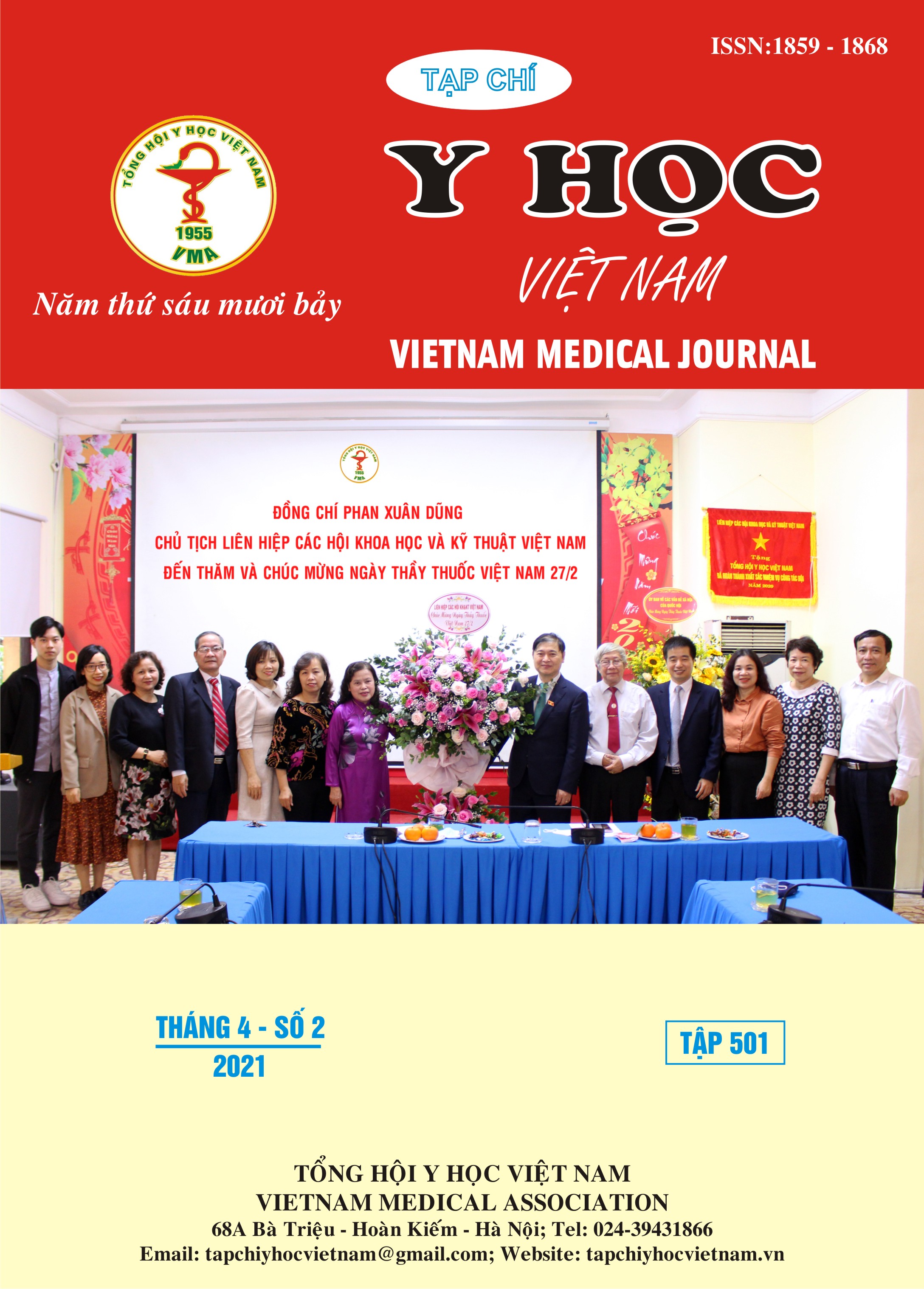CHARACTERISTICS OF UPPER ESOPHAGEAL SPHINCTER IN PATIENTS WITH LARYNGOPHARYNGEAL REFLUX SYMPTOMS AND TYPICAL GASTROESPHAGEAL REFLUX SYMPTOMS
Main Article Content
Abstract
A prospective study was conducted to describe the upper esophageal sphincter’s characteristics on high-resolution manometry (HRM) among patients having symptoms suspected laryngopharyngeal reflux (LPR) and those having typical symptoms of gastroesophageal reflux disease (GERD). Patients were recruited at Hoang Long Clinic between June 2020 and September 2020. The prevalence of patients in each group (LPR, typical GERD, and those with mixed symptoms) were 18.0%, 44.2%, and 37.8%, respectively. The medians of resting and residual UES pressure were 38.3mmHg and 14.3mmHg, respectively. The prevalence of patients having low resting UES pressure and abnormal residual UES pressure were 35.9% and 64.1%, respectively. Ineffective esophageal motility was the most common motor dysfunction in the three groups.
Article Details
Keywords
upper esophageal sphincter (UES), laryngopharyngeal reflux (LPR), high-resolution manometry (HRM)
References
2. Shaker R, Babaei A, Naini SR. Prevention of esophagopharyngeal reflux by augmenting the upper esophageal sphincter pressure barrier. Laryngoscope. 2014;124(10):2268-2274.
3. Babaei A, Venu M, Naini SR, et al. Impaired upper esophageal sphincter reflexes in patients with supraesophageal reflux disease. Gastroenterology. 2015;149(6):1381-1391.
4. Gerhardt DC, Castell DO, Winship DH, Shuck TJ. Esophageal dysfunction in esophagopharyngeal regurgitation. Gastroenterology. 1980;78(5 Pt 1): 893-897.
5. Vardar R, Sweis R, Anggiansah A, Wong T, Fox MR. Upper esophageal sphincter and esophageal motility in patients with chronic cough and reflux: assessment by high-resolution manometry. Dis Esophagus. 2013;26(3):219-225.
6. Wang K, Duan LP, Ge Y, Xia ZW, Xu ZJ. A comparative study of 22-channel water-perfusion system and solid-state system with 36-sensors in esophageal manometery. BMC Gastroenterol. 2012;12:157.
7. Passaretti S, Mazzoleni G, Vailati C, Testoni PA. Oropharyngeal acid reflux and motility abnormalities of the proximal esophagus. World J Gastroenterol. 2016;22(40):8991-8998.
8. Perry KA, Enestvedt CK, Lorenzo CS, et al. The integrity of esophagogastric junction anatomy in patients with isolated laryngopharyngeal reflux symptoms. J Gastrointest Surg. 2008;12(11):1880-1887.
9. Tomonaga T, Awad ZT, Filipi CJ, et al. Symptom predictability of reflux-induced respiratory disease. Dig Dis Sci. 2002;47(1):9-14.


